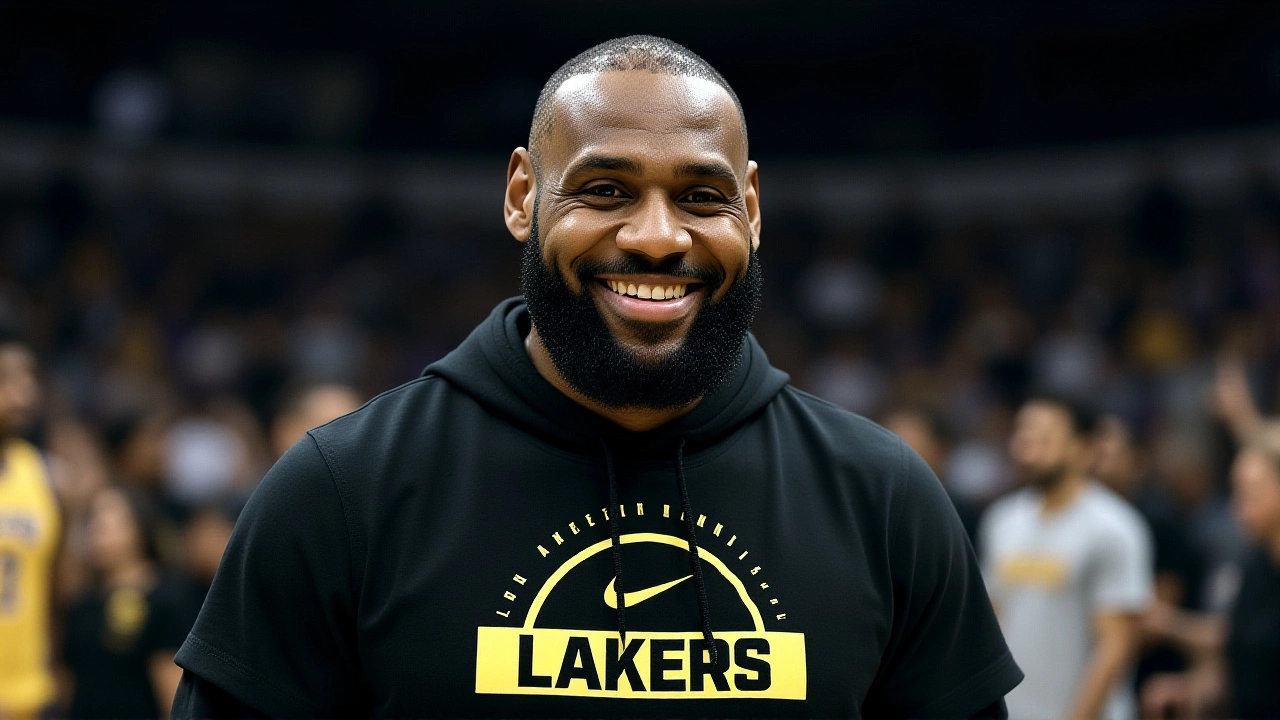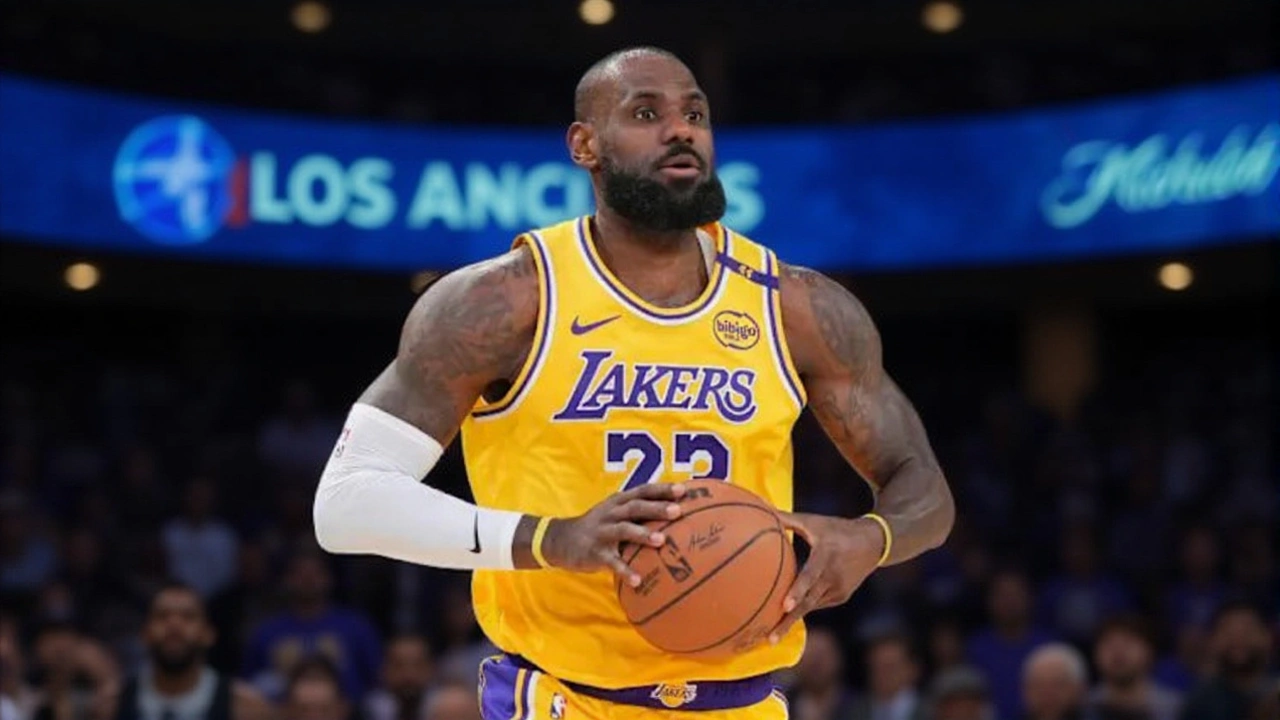At 40 years old, LeBron James didn’t just return to the court — he rewrote history. On Tuesday, November 18, 2025, at Crypto.com Arena in Los Angeles, the Los Angeles Lakers stomped the Utah Jazz 140-126 in a high-octane opener to James’ unprecedented 23rd NBA season. The victory wasn’t just another win — it was a statement. He’s the first player in league history to play 23 seasons, surpassing Vince Carter and Robert Parish. And he didn’t just show up. He orchestrated. He led. He reminded everyone why he’s still the game’s most magnetic force.
A Record That Will Never Be Broken
LeBron James entered the game with 7 months of rest since the end of the 2024-2025 season. No one expected fireworks. Not with the wear and tear of 22 prior campaigns, not at this age, not after a prolonged recovery. But here’s the twist: he didn’t need fireworks. He needed rhythm. And by the third quarter, he had it. His stat line — 11 points, 12 assists, 4 rebounds — looked modest on paper. But watch the film, and you’ll see a 40-year-old man reading defenses like poetry, threading passes through traffic with the precision of a surgeon. The assist total? Highest on the team. The timing? Perfect. He didn’t score to prove he could. He set up others because he knew the team had the firepower to finish.Luka Dončić Carries the Offensive Load
While James was the story, Luka Dončić was the engine. The Slovenian phenom, in his first full season alongside James after being traded from Dallas, dropped 37 points, 10 assists, and 5 rebounds — a near triple-double that silenced any doubts about his fit in Los Angeles. His step-back threes in the second half were surgical. One, from the left wing with 2:14 left in the third, drew a gasp from the crowd. The arena erupted. It wasn’t just scoring — it was art. He finished the night with 8-of-16 from deep, a testament to his growing confidence and the space James creates for him. Austin Reaves added 26 points and 5 rebounds, playing with the poise of a veteran. He’s the quiet assassin of this Lakers roster — never flashy, always effective. His mid-range pull-ups were textbook. He’s the perfect foil to Dončić’s brilliance and James’ leadership.Utah’s Fight, But Not Enough
The Utah Jazz didn’t roll over. Keyonte George, their 21-year-old guard, poured in 34 points on 5-of-8 from beyond the arc. He was electric. He made the Lakers pay for every lapse. But when the game turned physical in the fourth — and the Lakers’ depth showed — Utah’s youth couldn’t match the experience. Walker Kessler battled inside, but with no real secondary scorer beside George, the Jazz couldn’t sustain momentum. Their record fell to 5-9. Rebuilding? Yes. But they’re not out of it — not yet.LeBron’s Words: "Stay in the Moment"
Post-game, James spoke with his usual mix of sincerity and vagueness — the kind of answer only a 23-year veteran can give. "Starting with wind flow for you flow of everything," he began, pausing, smiling. "Win was a little shaky to begin. Obviously that was expected. But as the game went on… my win got a lot better." He chuckled. "Rhythm is still coming back. Seven months is a long time." When asked about his biggest challenge this season, he didn’t mention injuries, fatigue, or the weight of legacy. "Just stay in the moment," he said. "You know, at where I’m at in my career… year 23. You don’t think about the next game. You think about the next possession." He didn’t say it outright, but you could hear it: he’s not chasing records. He’s chasing presence. And that’s why he’s still here.
What This Means for the Lakers’ Championship Chase
The Los Angeles Lakers are now 11-4. They’re second in the Western Conference. The pieces are clicking: Dončić’s scoring, Reaves’ efficiency, James’ playmaking, and the emergence of role players like D’Angelo Russell and Jarred Vanderbilt. They’ve got the talent. But they’ve also got the pressure. Seventeen titles. Eighteen is the target. This win wasn’t just about beating the Jazz. It was about signaling to the league: we’re not just back. We’re dangerous. The team’s next three days are all about maintenance: practices on Thursday, Friday, and Saturday — November 20, 21, and 22 — before hitting the road. No destination was announced. But everyone knows: the real tests start now. Denver. Phoenix. Boston. Those are the games that define champions.Why This Matters Beyond the Box Score
LeBron James didn’t just break a record. He redefined what’s possible. At 40, he’s playing more minutes per game than most players half his age. He’s not just surviving — he’s thriving. His longevity isn’t luck. It’s discipline. Nutrition. Recovery science. Mental toughness. He’s become a living case study in athletic preservation. And for the NBA? It’s a gift. A 40-year-old superstar carrying the league’s biggest franchise, drawing global attention, boosting TV ratings, selling jerseys — it’s a narrative no algorithm could invent. The commentators were right: "It’s more prime time now." Because when LeBron plays, the world watches.What’s Next?
The Lakers’ next game is on the road, likely against a Western Conference contender. James will likely see 30+ minutes. Dončić will keep scoring. Reaves will keep clicking. And James? He’ll keep playing — not because he has to, but because he still loves it. The record is set. Now the question isn’t how long he’ll last. It’s how high he’ll lift this team before he’s done.Frequently Asked Questions
How does LeBron James’ 23rd season impact NBA longevity records?
LeBron James is now the only player in NBA history to compete in 23 seasons, surpassing Vince Carter and Robert Parish, who each played 22. No active player is even close — the next longest-tenured player is 15 years behind. His record is likely unbreakable, given the physical toll of modern basketball and the average career length of 4.8 years.
Why did LeBron James play only 11 points in his return?
Coaches intentionally limited his scoring role to preserve his energy and avoid overuse. With Luka Dončić and Austin Reaves carrying the offensive load, James focused on playmaking — he led the team with 12 assists. His scoring will ramp up as his rhythm returns, but efficiency and longevity are the priorities now.
How has the Lakers’ roster changed since last season?
The biggest addition is Luka Dončić, acquired in a blockbuster trade from Dallas. He’s replaced Anthony Davis as the primary scoring threat, allowing James to operate more as a facilitator. The defense has also improved with the addition of Jarred Vanderbilt and the continued development of D’Angelo Russell. This is a faster, deeper, more balanced team.
What’s the significance of the Lakers’ 11-4 start?
An 11-4 record through 15 games puts the Lakers among the top 3 teams in the Western Conference. Last season, they finished 12th in the West. This turnaround signals a legitimate title contender — especially with James, Dončić, and Reaves all playing at elite levels. Their true test comes in January, when the schedule toughens.
Is LeBron James still capable of carrying a team in the playoffs?
He doesn’t need to carry them alone anymore. But if needed, he still can. In the 2020 playoffs, he averaged 29-12-8 at age 35. His efficiency has held steady — his true shooting percentage is 60.1% this season, higher than his career average. He’s smarter now, not just stronger. In a close series, he’ll make the right play — and when it matters, he’ll still take over.
What’s next for the Utah Jazz after this loss?
The Jazz are in full rebuild mode at 5-9. Keyonte George’s emergence is a bright spot — he’s their best young talent. But without a true star or consistent interior presence beyond Walker Kessler, they’ll likely remain lottery-bound. Their focus is on draft picks, development, and possibly trading veterans for future assets before the deadline.
